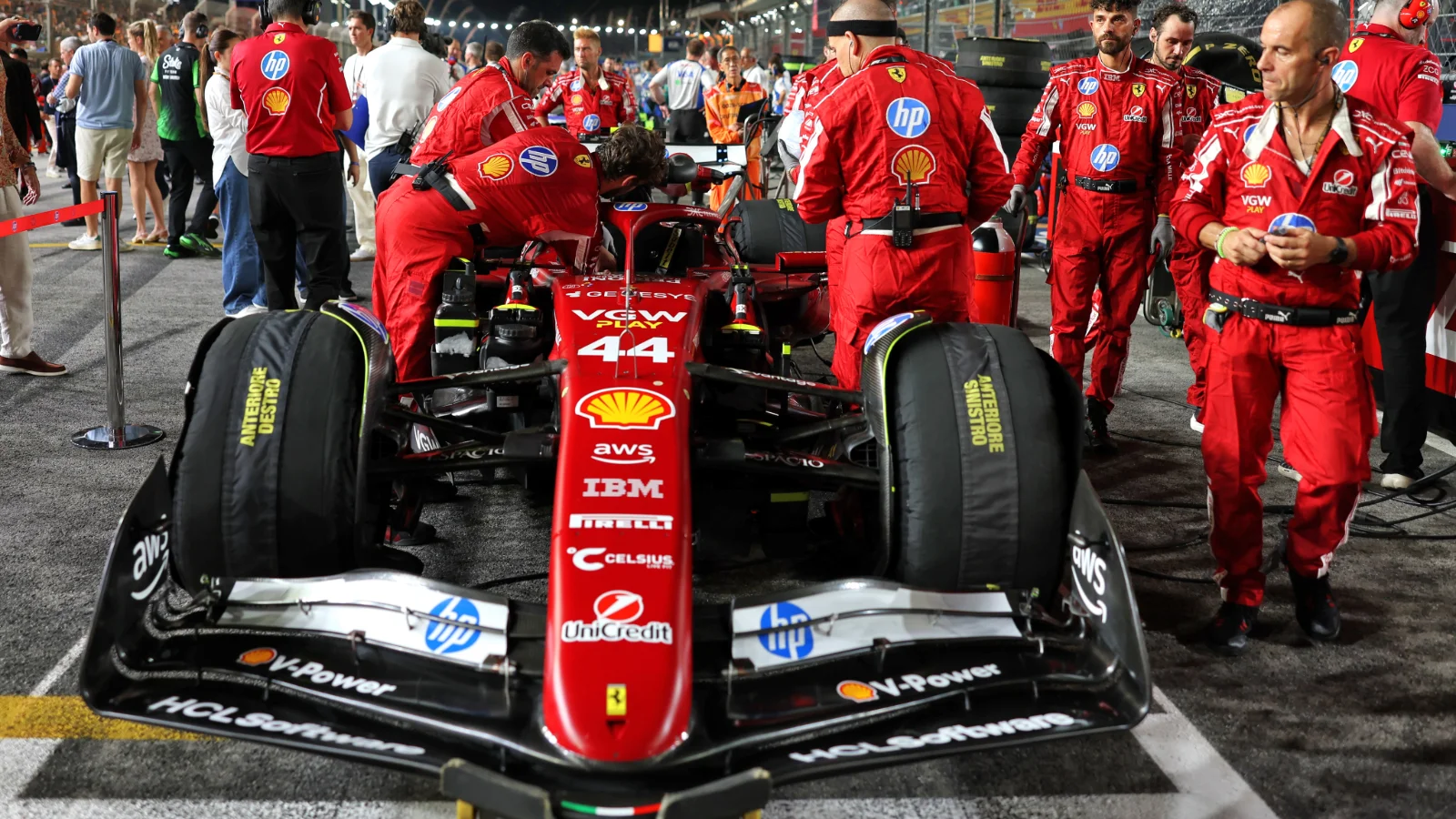Ferrari has diagnosed its problems from the Formula 1 Singapore Grand Prix, pointing to a simulation error that led to Lewis Hamilton‘s brake issues in the race.
Having possessed decent pace through the opening practice sessions, Ferrari’s competitiveness dwindled as the weekend progressed at the Marina Bay Circuit.
Charles Leclerc was told to lift and coast early on in the race, consigning him to sixth place.
Meanwhile, Hamilton struggled with his brakes in the final stages, leaving him to run wide and breach track limits to the point that he received a five-second penalty.
“The last few laps were definitely nerve-wracking,” Hamilton, who crossed the line seventh but was demoted to eighth, told media including Motorsport Week.
“I’ve finished races before with three tyres, and now I’ve finished one with three brakes.
“Not something I want to experience again. I could stop the car, but in those scenarios, the pedal just went straight to the floor.
“So I had no choice but to go onto those exit roads—I wouldn’t have made the corner otherwise. The FIA penalty was fine. Doesn’t really make a big difference to me anyway.”
 Ferrari’s torrid run continued in Singapore
Ferrari’s torrid run continued in Singapore
Ferrari explains Hamilton’s brake failure
Ferrari’s Head of Track Engineering, Matteo Togninalli, has now shed some more light on the situation, citing that the team got its calculations on cooling wrong.
“Formula 1 is always a trade-off between risk and pushing to the limit,” he addressed.
“In Singapore, consciously, we approached the quali and the race with a car that we knew was on the limit.
“We were aware that in the race, we would need some management for the brakes.
“Then due to the situation, due to the level of management that we have done, we arrived to run out of brakes the last four laps of the race.”
Togninalli didn’t shy away from conceding that the issues came down to an operational mistake by the team.
“So we were a bit too aggressive; that is a mistake. I think we have to admit when we make mistakes,” he continued.
In light of the overly aggressive strategy for Singapore, Togninalli confessed that the team is now reviewing everything and acknowledged that the issue comes from the fact that “our method was not able to predict the fact that the choice was too aggressive.”
“So we have to improve the tools to be able to predict what is going to happen,” he explained.
While Ferrari will be monitoring the situation during the United States Grand Prix weekend, Mexico will be the key to seeing if those inaccuracies have been fixed.
Despite the quick turnaround, Ferrari is hoping that it won’t have to approach the weekend cautiously, instead hoping to have the SF-25 at maximum performance.
“We are speeding up the process of improving the tools. We have a good sample now because most of the time you learn from critical cases,” Togninalli said.
“If everything is smooth and easy, it’s difficult to learn. So when you are at the limit, you learn.
“As well as in Mexico, we have to be a bit more conscious. I think it’s just a reasonable approach.”
READ MORE – McLaren downplays significance of Lando Norris repercussions
